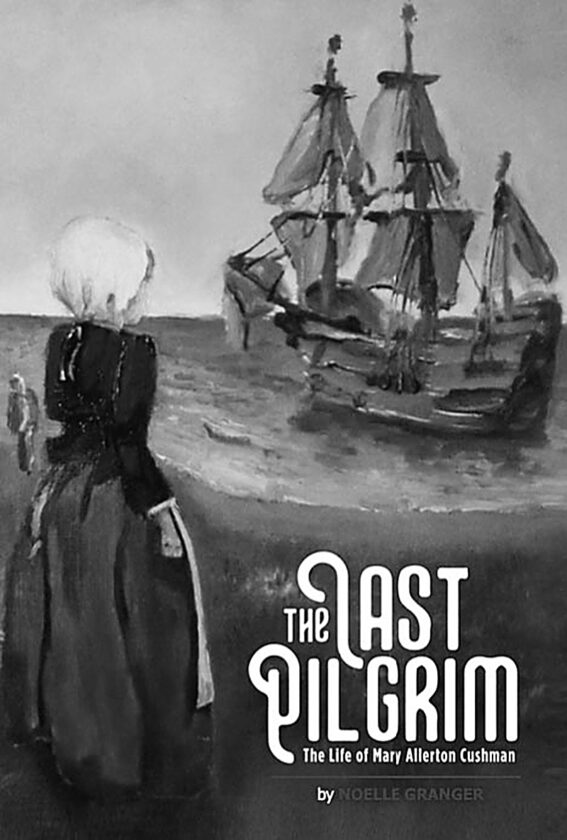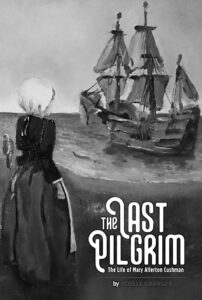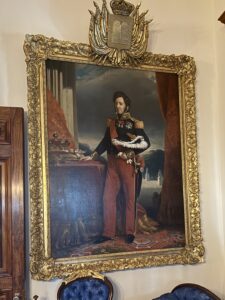Millions are connected to the voyage of the Mayflower
- (Photo provided) The cover of “The Last Pilgrim,” a historical fiction novel about the life of Mary Allerton.

(Photo provided) The cover of “The Last Pilgrim,” a historical fiction novel about the life of Mary Allerton.
Moving to a new area is always challenging. Moving to a whole different part of the world as the weather turns toward winter can be particularly difficult.
That’s exactly what a group of 102 people did when they headed to what would become their home when they boarded the Mayflower and headed west across the Atlantic Ocean in September of 1620.
By the time they arrived on Nov. 21 off the coast of what is now Massachusetts, winter was starting to close in. They had planned to arrive earlier, but issues with a second ship, the Speedwell, delayed their start. In the end, only the Mayflower sailed to the new world. The longer-than-expected journey used up many of the supplies meant to get them through the winter.
In early December they first explored the area where they would settle and build the community of Plymouth. The group would remain on the Mayflower through the first winter before moving on land in the spring.
More than half of the passengers and crew never made it, dying onboard before spring. Those who survived moved to shore and began building huts. Native Americans helped teach the remaining 53 how to live off the land. The Mayflower and its crew left in April to return to England.
Entire families had made the trip across the Atlantic, including many children. In fact, half of those surviving the first winter were under 18. Many of the youth went on to have their own families.
One of the youngest, Mary Allerton, was to be the last survivor of the voyage. Centuries later I was working on my genealogy and found that I had an ancestor that lived in Plymouth Massachusetts in the 1600s. For some reason I didn’t make the connection that the ancestor was one of the 53 that made it through the first winter. It wasn’t until my sister alerted me a few months ago that we are in fact connected to the Mayflower voyage and to Allerton, our great- great- great- great- great- great- great- great- great- great- great-grandmother.
In 1936 Mary married Thomas Cushman who had arrived in Plymouth in 1621. Together they had eight children, seven of which survived until adulthood and some 50 grandchildren. The couple never moved from Plymouth. Thomas died in 1691. Mary died in November of 1699 and is buried in Plymouth. We are descendants of daughter Lydia Cushman, who had a daughter named Lydia Harlow. This eventually led to my grandfather, the original Arthur Smith.
Is it rare to be related to someone that was on the Mayflower? Not as rare as you think.
There is actually a group called the Mayflower Society that documents such things. They estimate that there are 35 million people world-wide and 10 million in the United States that can trace their family back to the cold, long trip across the Atlantic in 1620. Remarkable, given the fact that only 51 of the 102 people that made the trip had children.
There are among those 10 million Americans many people that have gained some notoriety on their own. They Include:
¯ John Adams, the second president. As well as George W. Bush, Franklin Roosevelt and Ulysses S. Grant.
¯ Actresses Marilyn Monroe and Katharine Hepburn, and actor Clint Eastwood.
¯ Singers Taylor Swift and Bing Crosby.
Unless you join the Mayflower Society, there are no special perks that you get. You do get the satisfaction of knowing that at least a small part of your family has been around to witness a lot of American history.
Art Smith is online manager of The Marietta Times and The Parkersburg News and Sentinel, he can be reached a asmith@mariettatimes.com


